Demo Video:
Project Summary
– This project is a UI exploration that re-imagines the nostalgic cultural phenomenon, Tamagotchi, as a lifestyle and health management system experienced through hologram display and non-touchscreen interaction.
Project Brief
– 90s fad, Tamagotchi was a cultural phenomenon many of us remember. With advances in technology and smartphones, they have become a nostalgic product category. But with recently demonstrated by Pokemon Go, nostalgia, new medium and newer technology is a great recipe for successful product. But I wanted to further offer more than just nostalgia of having a newly revived Tamagotchi on smartphones. Learning the lessons from the side effects of our technology today, I wanted to detach people from the screens and give more physical interactions while incentivizing them to exercise more, eating better.
The new OVOs app is only usable when the phone is face down on the hologram viewer. You can use gestures to navigate any interfaces, tapping on the phone to select, talking or blowing on microphones to make various interactions. First off, It will adopt you an egg to start with. It will eat what you eat, by entering food and hydration journal information through photo, search, nutrition value and scanning barcode. It will import data from your phone or fitness tracker of your steps and activities. It starts from an infant state and grows to become a capable Artificial Intelligence that can help with various tasks that unlocks useful features.
Problem/Challenge
1. How might we make the hologram display more portable and easy to view?
2. How might we eliminate current UI problems relying too much on screen interaction?
3. How might we create a product ethically marketable to children?
Context of Problem
– While hologram displays are used in only high-end product display in physical store as an installation, there are not many application of this design in other forms.
– With an example of Pokemon Go or Virtual Pet apps, people are distracted by the screen in the real world and it is interfaced with touch screen that only delivers entertainment and nothing else.
– Especially with respect to kids, there are many studies of the amount of screen time negatively affecting the development of children. As well as other
secondary side-effects such as posture, insomnia due to bed-time screen usage and limited social interactions.
Design and Topic Researches
– Mimicking the design of big displays there were many different iterations using the reflection. I ended up choosing pyramid design as it creates a spatial
context for the virtual OVOs characters to sit in which enhances the experience and engagement.
